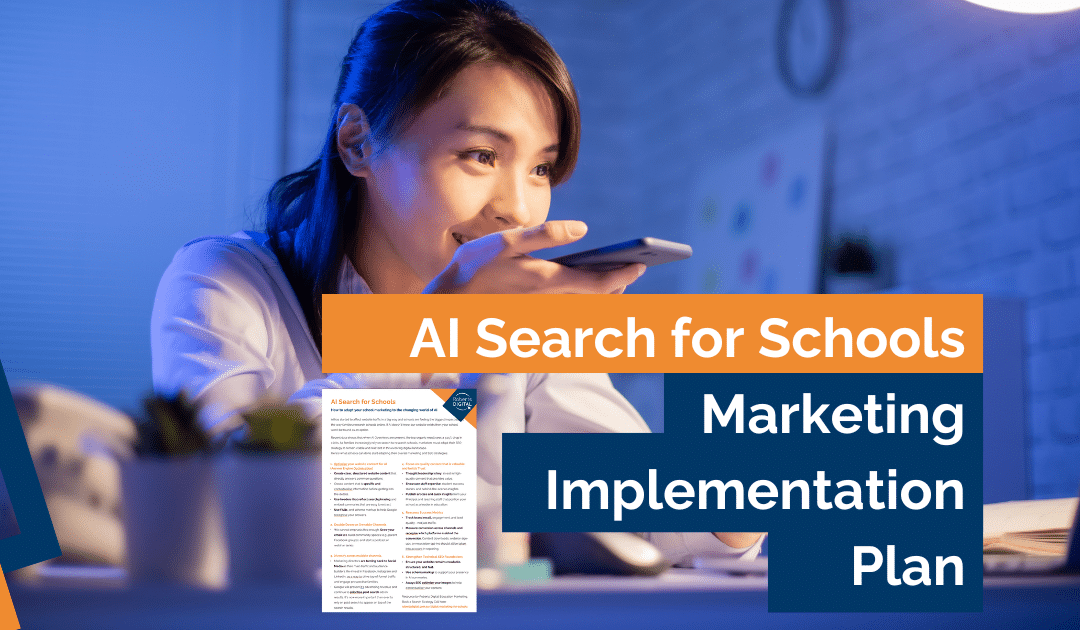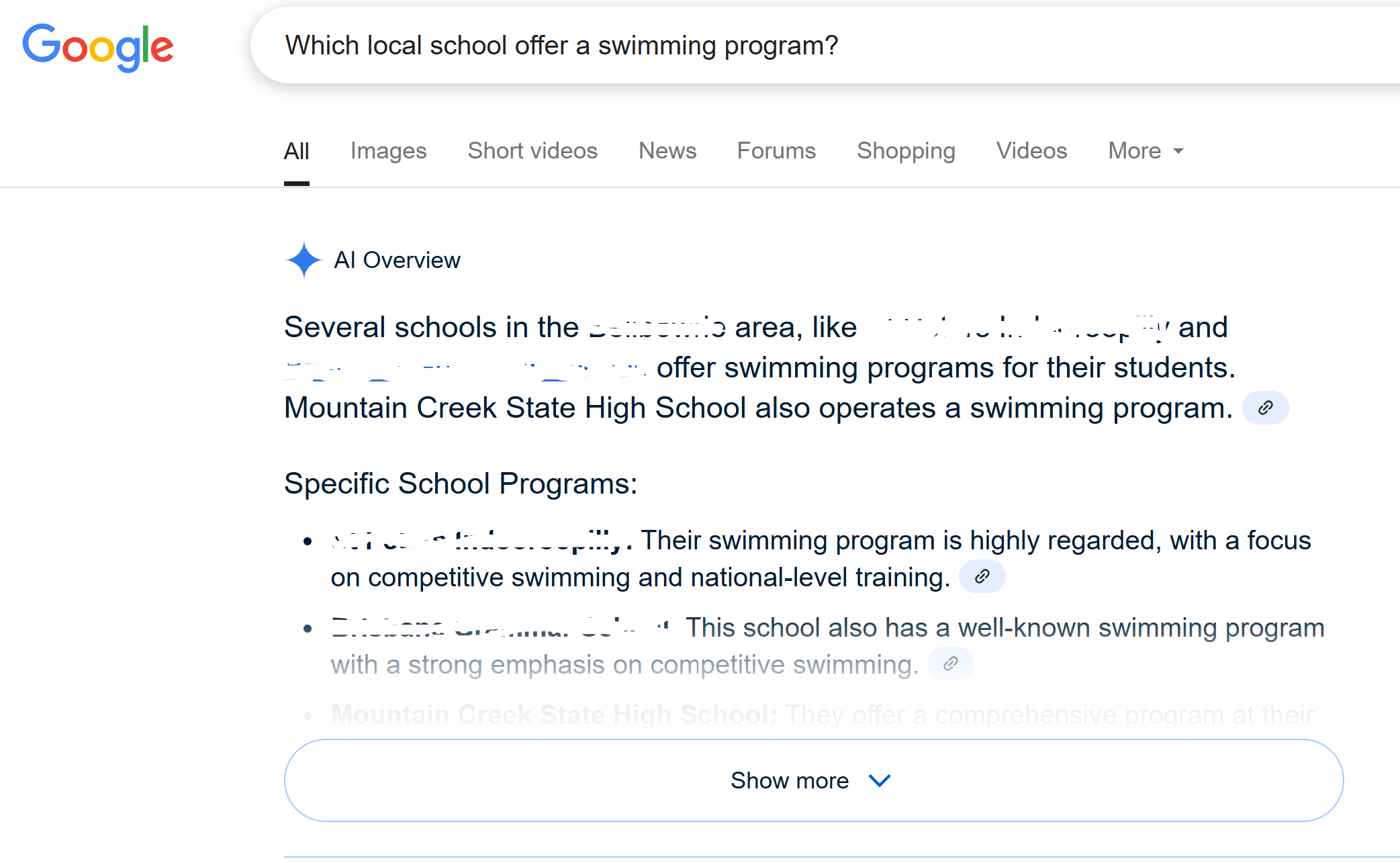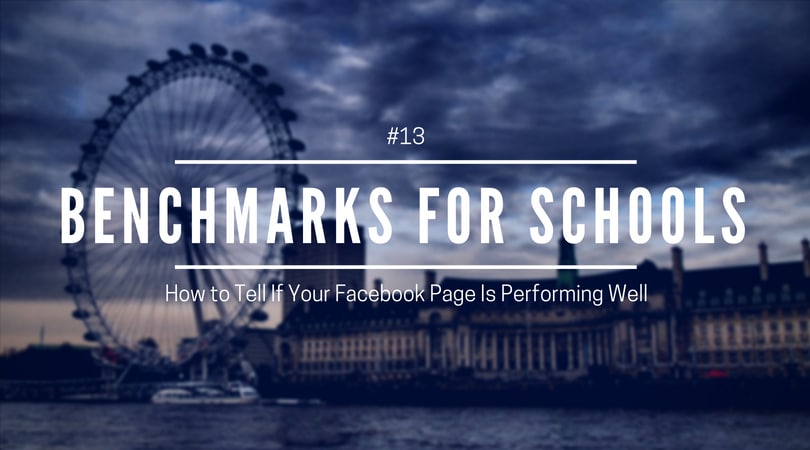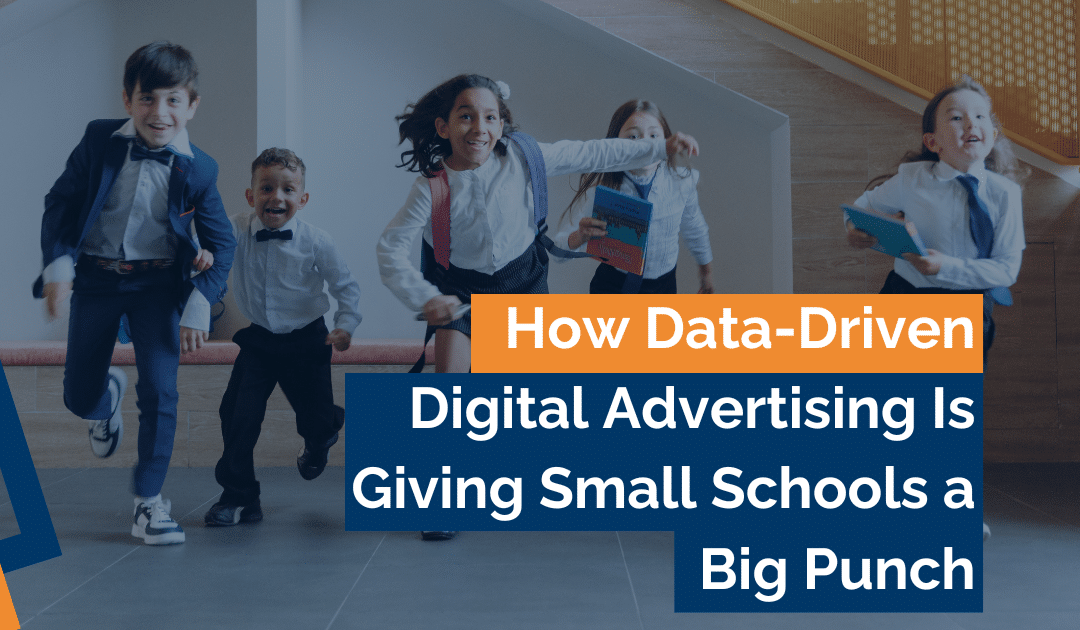
AI for Schools Marketing and SEO: How to Adapt for the Future
Have your noticed how Google’s new AI Overviews are changing the way search results appear? —and it’s having a major impact on how users engage with content. These AI-generated summaries appear at the top of search results and aim to answer user queries instantly, reducing the need to click through to websites.

For schools, this means fewer people may reach your site, even if you’re ranking in the top positions. Recent data shows that when AI Overviews are present, the top organic result sees a 34.5% drop in clicks. As families increasingly rely on search to research schools, marketers must adapt their SEO strategy to remain visible and relevant in this evolving digital landscape.
How School Marketers Need to Shift Their Mindset
I am a firm believer that every challenge makes us better and opens up new opportunities and the introduction of AI Overviews requires a mindset shift for school marketers. The days of simply chasing rankings and clicks are fading – good marketers have always known this. It’s time to rethink what success looks like and focus on long-term brand and relationship-building. We need to change our mindset:
- From Clicks to Connections
Yes, traffic might drop. But that doesn’t mean your audience is gone, it means you need to focus on making an impression that sticks. Be the school people remember, not just the one they scroll past. - From Rankings to Relevance
Being #1 in search doesn’t mean much if you’re hidden below an AI summary. The goal now? Be useful enough that the AI references you—or be memorable enough that people search for you directly. - From Volume to Value
Avoid keyword stuffing. Content now needs to be genuinely helpful. Consider incorporating FAQs, bold subheadings, and quick takeaways. Formatting matters just as much as the message. - From Dependency to Ownership
Depending on Google alone is now a risky strategy. Schools should invest in owned channels—email, social media, podcasts, and community spaces. Your owned platforms are how you stay connected to prospective families, no matter how algorithms change. - From Metrics to Meaning
Traditional SEO metrics like impressions and clicks may no longer reflect true performance. Start measuring brand recall, community engagement, and lead quality. These metrics will help track the deeper relationships that lead to enrolments. - From Visibility to Memorability
In a click-scarce world, it’s the schools that consistently show up with helpful, human content that will be remembered. Invest in thought leadership, storytelling, and trusted voices from your community.
This shift in mindset is about understanding how families are searching for schools and ensuring a holistic strategy is implemented from a point of understanding. Next, let’s deep dive into the new measures of success that you will need for your school marketing.
The New Measures of Success
As AI Overviews change the way users interact with search results, school marketers must evolve how they define and measure success. Traditional metrics like impressions, traffic volume, and keyword rankings no longer tell the full story. The focus must now shift towards deeper, more meaningful indicators of engagement and influence.
- Position #1 Isn’t the Goal Anymore:
Being referenced within the AI Overview or remembered through strong branding is now more valuable than simply ranking. Google is rumoured to be integrating AI visibility into Search Console—this will become a key indicator of success.
- Better Audience Quality
Fewer clicks but stronger intent: users who do click after reading an AI Overview are likely further along in the decision process. - Greater Emphasis on Memorability
It’s less about visibility, more about memorability. Ensure your school name is mentioned often, clearly, and consistently. - Emergence of New Discovery Channels
Platforms like LinkedIn, email newsletters, and podcasts are becoming more powerful in shaping perceptions and capturing attention. - Content That Travels
Create stories and insights that can live across platforms and mediums and repurpose blog posts into social content, podcast talking points, or video explainers. - Trust as the New Conversion Tool
As clicks decrease, trust increases in value. Brands that are helpful, transparent, and knowledgeable will be top of mind when decisions are made. - Position for the Next Wave
Prepare for Google Search Console to potentially include AI Overview performance data.
Stay ready to adapt as search platforms evolve and new metrics emerge.
For Australian schools, the opportunity that AI brings lies in adapting early, investing in value-driven content, and being present across multiple platforms.
Roberts Digital is already successfully implementing an AI search framework for our school clients. Book a free SEO strategy call to learn what we can do for your school.









